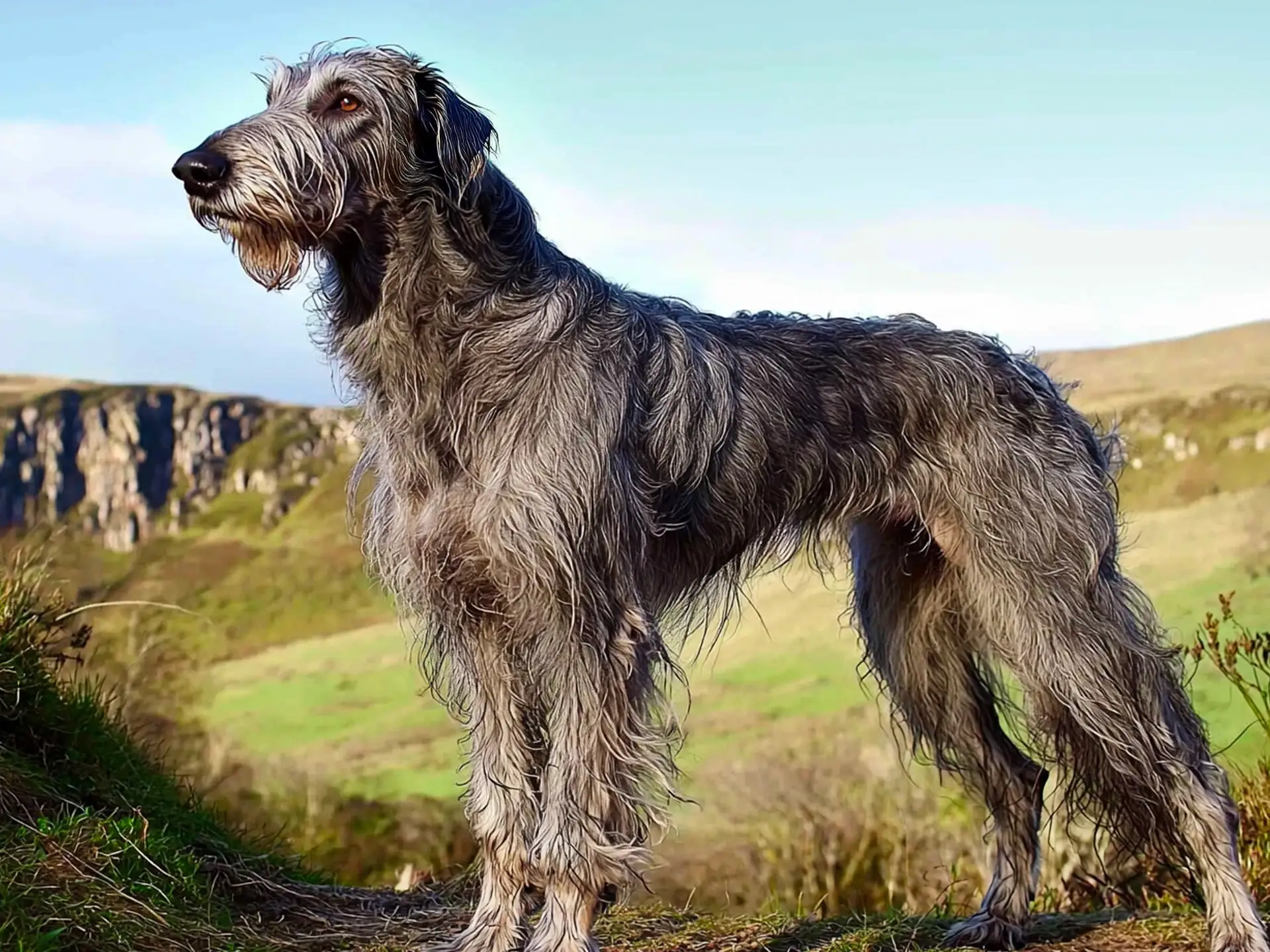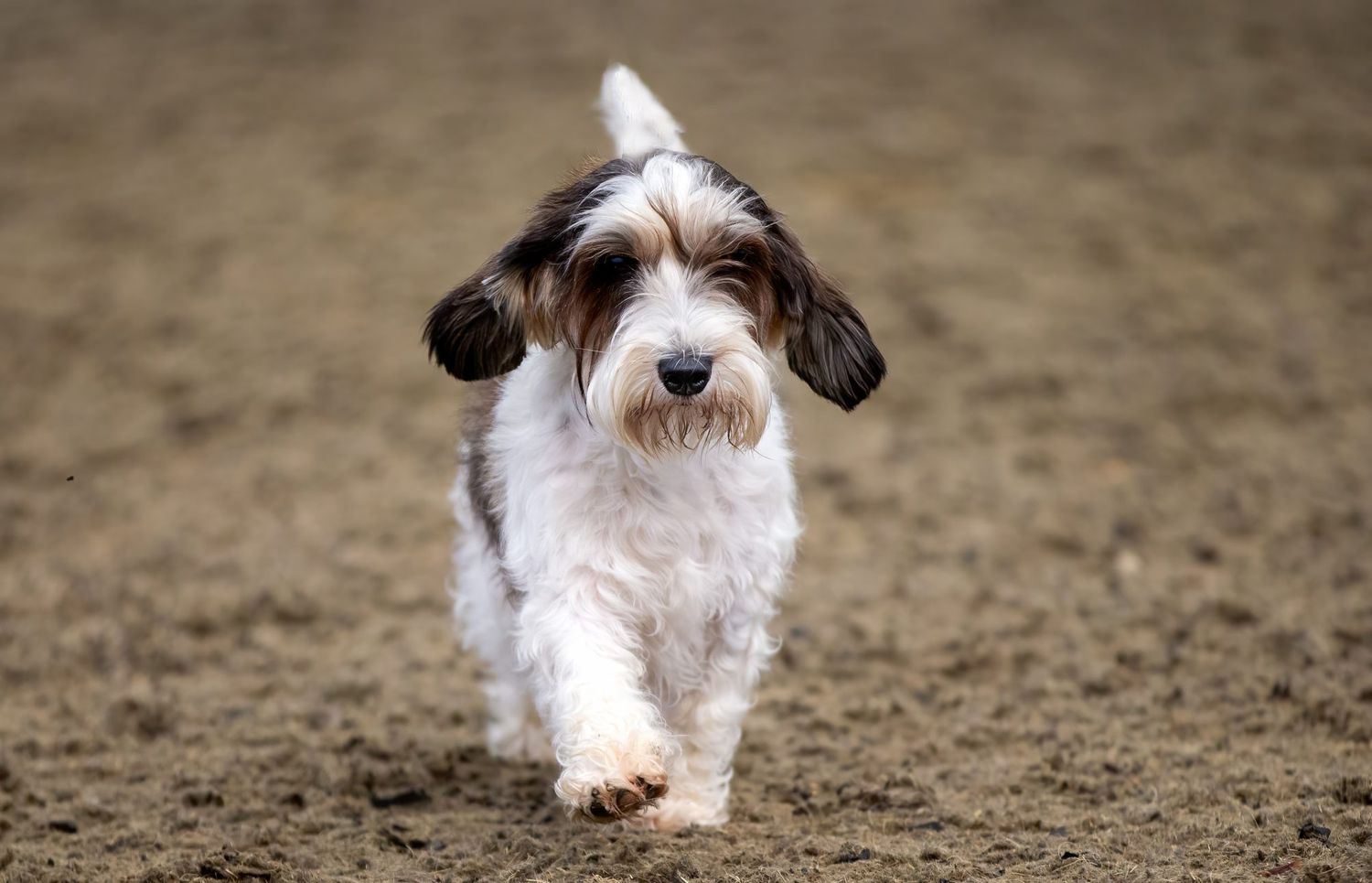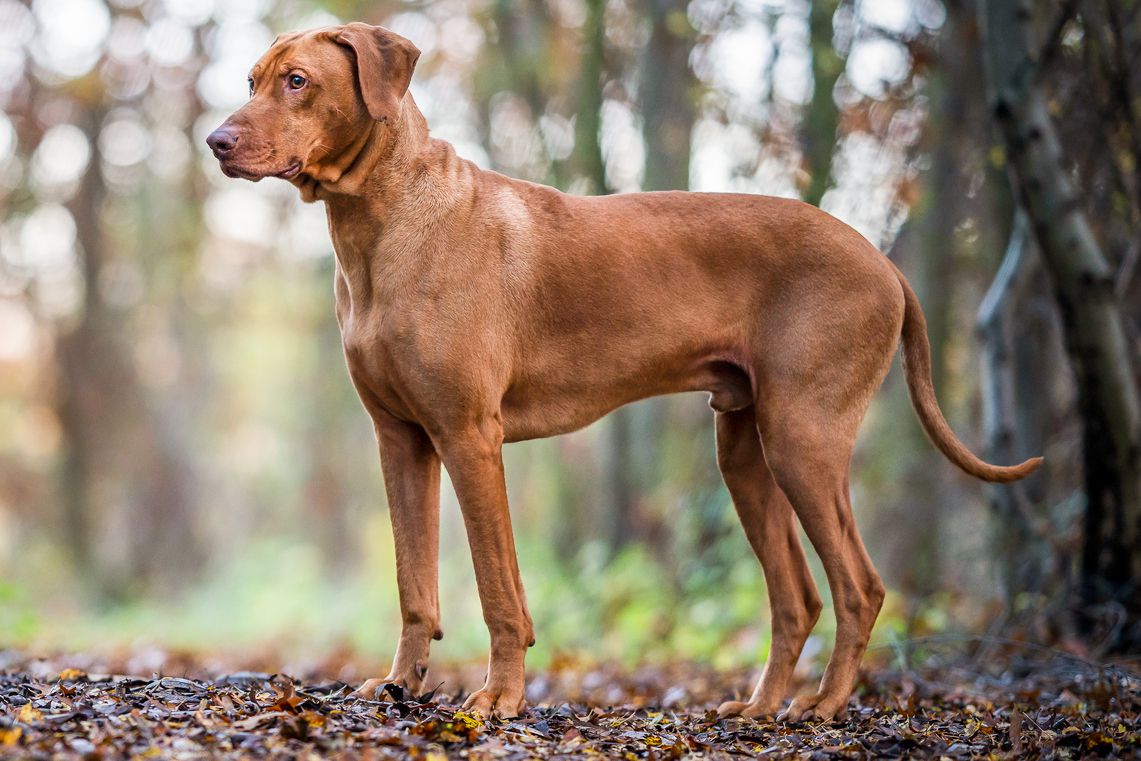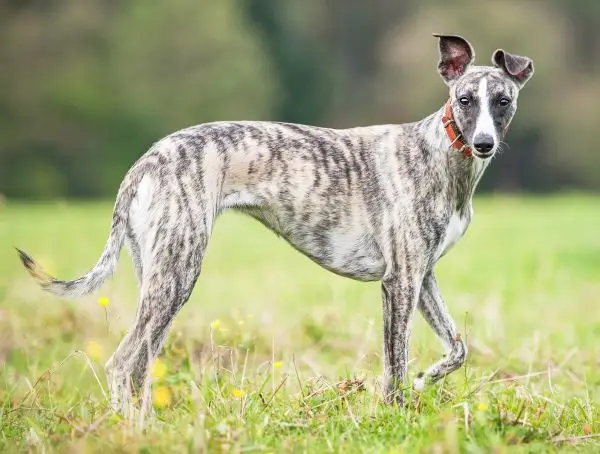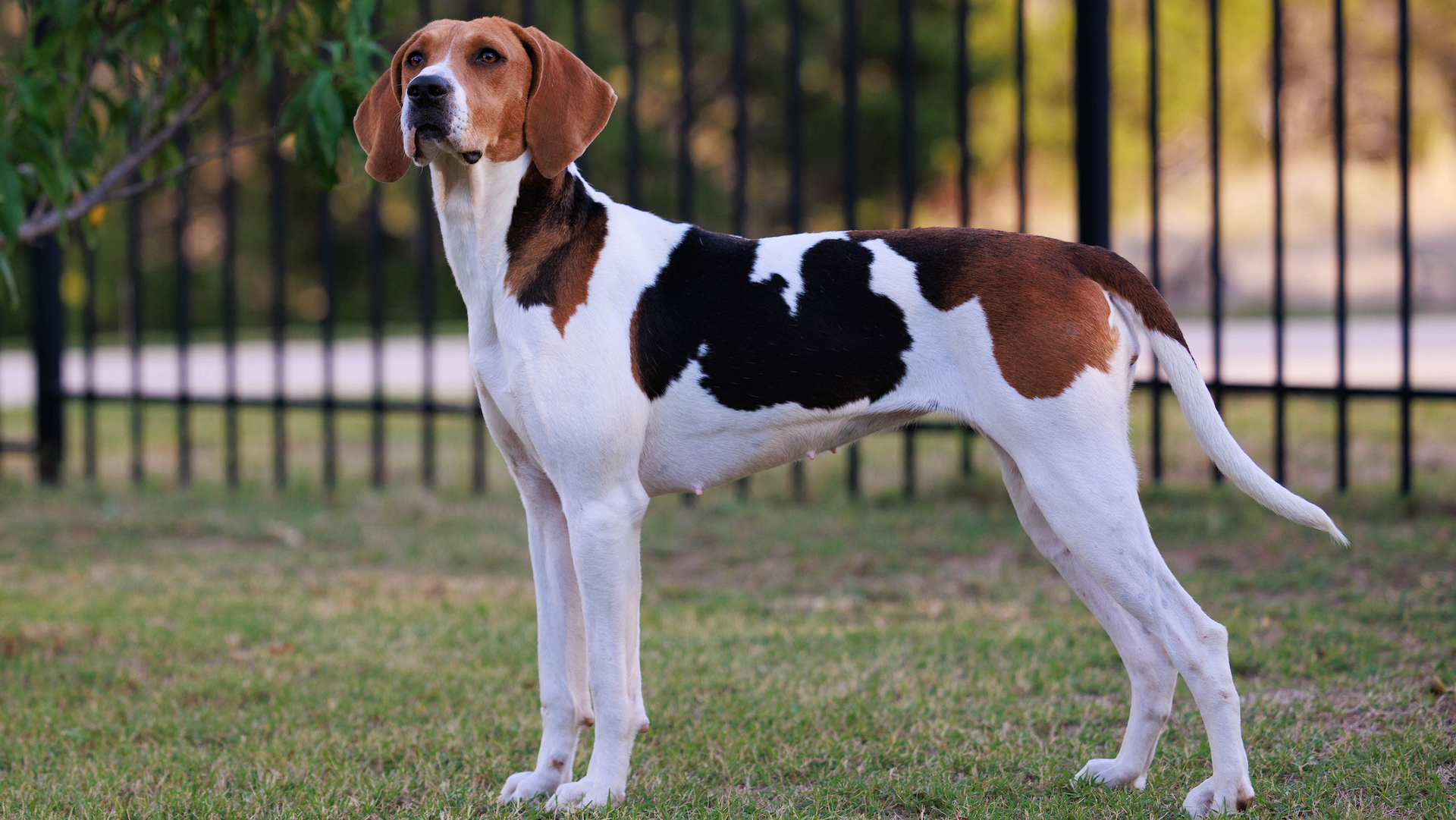My Unforgettable First Meeting with a Scottish Deerhound
I’ll never forget the first time I encountered a Scottish Deerhound. I was hiking in Vermont when I spotted what I initially thought was a small horse in the distance. As the creature moved closer, I realized it was actually a dog – an enormous, elegant dog with a shaggy coat and the most graceful movement I’d ever seen in a canine. The owner noticed my amazed expression and smiled. “Everyone has that reaction to Magnus,” she said, as her gentle giant approached me with surprising gentleness for his size. I was immediately struck by his calm, dignified demeanor – there was something almost noble about him, like he belonged in a medieval castle rather than on a modern hiking trail.
After chatting with his owner, I learned Magnus was a Scottish Deerhound, one of the oldest and most aristocratic breeds in the world with a history dating back to before recorded history. “They’re gentle souls,” she told me. “Everyone thinks hunting dogs must be high-energy and intense, but Deerhounds are actually quite laid-back when they’re not chasing deer.” By the time Magnus leaned his impressive weight against my leg – apparently a classic Deerhound show of affection – I was completely captivated by these majestic dogs.
If you’ve never seen a Scottish Deerhound in person, you’re not alone. Despite their impressive history and remarkable qualities, they remain one of the rarer breeds. But these “Royal Dogs of Scotland” – once so prized that no one of rank lower than an earl could own one – deserve much wider recognition for their extraordinary combination of athleticism, gentleness, and historical significance.
Whether you’re considering adding one of these gentle giants to your family, fascinated by their incredible history, or simply curious about distinctive dog breeds, I’ve put together the ultimate guide to Scottish Deerhounds. From their ancient Celtic origins to what they’re actually like as companions (spoiler alert: they’re amazing!), we’ll cover everything you need to know about these extraordinary hounds. So grab your favorite beverage, get comfortable, and let’s explore the wonderful world of Scottish Deerhounds!
Royal Heritage: The Ancient History of Scottish Deerhounds
To truly understand what makes Scottish Deerhounds so special, we need to appreciate their extraordinary history, which stretches back into the misty origins of Scotland itself and has shaped every aspect of these remarkable animals.
Origins in Ancient Scotland
The Scottish Deerhound is believed to be one of the oldest breeds in existence, with ancestors that likely arrived in Scotland with early Celtic tribes around 500-1000 BCE. Archaeological evidence, including stone carvings and ancient artifacts, depicts large, rough-coated sighthounds remarkably similar to today’s Deerhounds, suggesting the breed has maintained its essential type for thousands of years.
These early Deerhounds were prized hunting companions used to pursue and bring down the large red deer that roamed the Scottish Highlands. In a time before firearms, a swift, powerful hound capable of catching and holding deer was not merely a luxury but a necessity for providing food. The challenging terrain of the Highlands – with its mountains, valleys, and rough moorland – shaped the Deerhound into a dog with exceptional stamina, speed, and strength, yet one agile enough to navigate difficult landscapes.
The Royal Dog of Scotland
By the Middle Ages, the Scottish Deerhound had achieved elite status and was known as the “Royal Dog of Scotland.” Their ownership was restricted by law to those of rank no lower than an earl, making them symbols of nobility and privilege. This exclusivity nearly led to the breed’s extinction when the clan system was destroyed after the defeat of Bonnie Prince Charlie at the Battle of Culloden in 1746.
The breed’s aristocratic connections are reflected in numerous historical references. Mary, Queen of Scots, was known to hunt with Deerhounds, as were many Scottish nobles. Sir Walter Scott, the famous Scottish author, kept Deerhounds and immortalized the breed in his novel “Waverley,” describing them as “the most perfect creatures of Heaven.”
Revival and Modern Recognition
The revival of the Scottish Deerhound is largely credited to two brothers, Archibald and Duncan McNeill, who began a careful breeding program in the early 19th century. Their efforts, along with those of other dedicated enthusiasts, helped reestablish the breed after its numbers had dwindled dangerously low.
Scottish Deerhounds were first exhibited at dog shows in the mid-19th century and were recognized by the American Kennel Club in 1886. Despite this recognition, they’ve remained relatively rare. Today, they typically rank around 160th in popularity among AKC-registered breeds, which has actually helped maintain their health and distinctive character compared to some more commercially popular breeds.
While modern Deerhounds are primarily companions rather than working hunters, some still participate in lure coursing and other activities that showcase their natural abilities. Their ancient lineage and distinctive appearance make them living links to Scotland’s historic past, even as they adapt to life as beloved family members in the modern world.
The Scottish Deerhound Look: Rustic Elegance
The Scottish Deerhound’s appearance combines rustic strength with a natural elegance that speaks to both their working heritage and their aristocratic connections. Often described as resembling a rougher, larger Greyhound, their distinctive look is both functional and striking.
Size and Structure
Scottish Deerhounds are tall, imposing dogs with a graceful build that belies their strength and power. Males typically stand 30-32 inches at the shoulder and weigh 85-110 pounds, while females are slightly smaller at 28+ inches and 75-95 pounds. Despite these impressive measurements, they give an impression of elegance rather than bulk.
Their overall silhouette is defined by clean lines and well-balanced proportions. Key physical characteristics include:
- A long head with a flat skull, slight stop, and tapered muzzle
- Dark eyes with a soft, thoughtful expression
- Small ears that fold back against the neck when relaxed
- A long, arched neck flowing into sloping shoulders
- A deep chest that provides ample lung capacity
- A curved topline with an arched loin
- Long, flat-boned legs built for speed and endurance
- A long, curved tail that reaches almost to the ground
Perhaps most impressive is the Deerhound’s movement – a smooth, effortless gait that covers ground with remarkable efficiency. When running at full speed, they display the double-suspension gallop characteristic of sighthounds, where all four feet leave the ground twice in each stride cycle, allowing them to reach speeds of up to 30 miles per hour.
The Distinctive Coat
The Scottish Deerhound’s coat is one of their most recognizable features – harsh, wiry, and about 3-4 inches long over most of the body, with longer hair on the neck, chest, belly, and backs of the legs. This rough coat served a practical purpose in Scotland’s harsh climate, providing protection from cold, wet weather and rough vegetation.
The texture of the coat is more important than its length in the breed standard – it should feel crisp and somewhat bristly to the touch, never soft or silky. Underneath the harsh outer coat is a softer, insulating undercoat that provides additional protection against the elements.
Deerhounds come in various colors, with the most common being:
- Dark blue-gray (the most traditional color)
- Various shades of gray
- Brindle (tiger-striped pattern)
- Yellow/fawn/red-fawn
- Sandy
White markings on the chest, feet, or tail tip are not uncommon, though extensive white is not desirable according to the breed standard. The face typically features a darker mask, with many Deerhounds having dark ears and muzzles regardless of their body color.
Despite its rough appearance, the Deerhound’s coat is relatively low-maintenance. Weekly brushing with a pin brush or slicker is usually sufficient to remove loose hair and prevent matting, with more frequent brushing during seasonal shedding periods. Occasional hand-stripping can help maintain the proper harsh texture, though many pet owners skip this more involved grooming step.
Personality & Temperament: The Gentle Hunter’s Heart
Perhaps the most surprising aspect of Scottish Deerhounds for those who don’t know the breed is the remarkable contrast between their historic role as fierce hunters and their extremely gentle, sensitive personalities. Understanding this dichotomy is key to appreciating what makes these dogs so special as companions.
The Sensitive Soul
Despite their imposing size and hunting heritage, Scottish Deerhounds are known for their exceptionally gentle, sensitive temperaments. Most are quiet, dignified dogs who approach life with a calm, sometimes almost philosophical attitude. They typically form deep bonds with their human family members but express their affection in subtle ways – leaning against a favorite person, quietly following them from room to room, or resting a head in their lap.
This sensitivity extends to how they respond to treatment. Harsh words or training methods can deeply affect a Deerhound, causing them to withdraw or lose confidence. They thrive on gentle guidance, positive reinforcement, and respectful handling that honors their dignified nature.
With children, most Deerhounds are patient and gentle, seeming to understand the need for careful movement around smaller humans. However, their large size means they can inadvertently knock over small children simply by turning around or wagging their tail, so supervision is always important. They generally do best with older, more respectful children who understand how to interact appropriately with a large, sensitive dog.
The Independent Thinker
Like many sighthounds, Deerhounds possess an independent intelligence that sometimes gets misinterpreted as stubbornness or even lack of intelligence by those accustomed to more biddable breeds. In reality, Deerhounds are quite smart but were bred to think for themselves while hunting rather than constantly looking to humans for direction.
This independent thinking manifests in a dog that understands commands perfectly well but may choose whether to comply based on their own assessment of the situation. It’s not defiance so much as self-directed decision-making – a trait that served them well when hunting over vast, rugged terrain where they needed to make quick decisions without handler input.
Training approaches that respect this independence while providing clear, consistent guidance tend to be most successful with Deerhounds. They respond well to positive reinforcement and quickly learn household rules and basic manners, though they may never achieve the instant, eager obedience of breeds developed specifically for trainability.
Home Life and Activity Patterns
One of the most delightful surprises for many Deerhound owners is how calm and undemanding these dogs are in the house. Despite their historic role as active hunters, adult Deerhounds are typically quiet, low-energy dogs indoors who are content to spend much of the day lounging in comfortable spots. Many owners describe them as “great couch potatoes” who require less exercise than their size and history might suggest.
Their energy pattern tends to follow their hunting heritage – short bursts of intense activity (when they might run at top speed, play enthusiastically, or race in circles) followed by long periods of rest. This pattern makes them well-suited to homes where they can receive daily walks and occasional opportunities to run safely, but don’t need constant, high-energy engagement.
Deerhounds typically do well with other dogs and often enjoy canine companionship. Many form particularly close bonds with other sighthounds whose play and communication styles match their own. With cats, individual tolerance varies – some Deerhounds live peacefully with cats they’re raised with, while others maintain a strong prey drive toward all small, furry creatures.
Living With a Scottish Deerhound: Practical Considerations
Beyond their history and personality, what’s it actually like to share your home with a Scottish Deerhound? There are some practical considerations that potential owners should understand before bringing one of these gentle giants home.
Space and Exercise Needs
While Scottish Deerhounds are generally calm indoors, their sheer size means they do take up significant space. A full-grown Deerhound stretched out on a sofa doesn’t leave much room for human companions! Most appreciate soft, comfortable resting places, with many owners providing large dog beds or even mattresses to accommodate their size.
Contrary to what some might expect, Deerhounds don’t necessarily need a large yard, though they certainly enjoy having space to stretch their legs. More important than yard size is providing regular exercise opportunities that allow them to use their bodies as they were designed to do. Most adult Deerhounds need:
- Daily walks (30-60 minutes total)
- Opportunities to run off-leash in a securely fenced area 2-3 times weekly
- Mental stimulation through training, play, or environmental enrichment
Young Deerhounds (under two years) typically have higher energy levels than adults and benefit from additional playtime and carefully managed exercise. However, it’s important to avoid excessive running or jumping on hard surfaces during growth phases to protect developing joints and bones.
One exercise consideration specific to Deerhounds is their prey drive. These dogs were bred to chase and catch deer, and most maintain a strong instinct to pursue moving animals. For safety, they should only be allowed off-leash in securely fenced areas, regardless of how well-trained they seem. A Deerhound who spots a rabbit or deer can accelerate to 30+ mph in seconds and may not respond to recall commands once in pursuit.
Health Considerations and Lifespan
Like many giant breeds, Scottish Deerhounds have a relatively short lifespan compared to smaller dogs. Most live between 8-11 years, though some reach 12 or occasionally older. This shorter lifespan is perhaps the most challenging aspect of Deerhound ownership for many people who form deep bonds with these special dogs.
Several health issues appear in the breed with some frequency:
- Cardiomyopathy and other heart conditions
- Osteosarcoma (bone cancer)
- Bloat/gastric torsion
- Liver shunt
- Factor VII deficiency (a blood clotting disorder)
- Cystinuria (a urinary condition)
Working with a reputable breeder who conducts appropriate health testing can reduce the risk of these conditions. Regular veterinary care, including cardiac evaluations, is essential for monitoring health. Many owners opt for preventive gastropexy (stomach tacking) when their Deerhounds are spayed or neutered to reduce the risk of bloat.
The financial aspect of giant breed ownership is another practical consideration. Everything from food to medications to preventative care costs more for a dog of this size, and finding a veterinarian comfortable with handling giant breeds is important.
Feeding and Growth
Proper nutrition is crucial for Scottish Deerhounds, particularly during their extended growth period. These dogs typically take 2-3 years to reach full physical maturity, with most of their growth occurring in the first 12-18 months. During this time, careful feeding helps ensure healthy development without promoting too-rapid growth, which can contribute to orthopedic problems.
Most experts recommend feeding Deerhound puppies a large-breed or giant-breed puppy food, or an all-life-stages food appropriate for large breeds. These formulations provide balanced nutrition with appropriate calcium/phosphorus ratios to support bone development.
Adult Deerhounds typically eat 3-6 cups of high-quality food daily, divided into at least two meals. Many owners feed multiple smaller meals rather than one large one to reduce the risk of bloat. Raised feeding stations are often recommended to accommodate their height and to minimize neck strain.
Despite their size, Deerhounds should maintain a lean body condition – excess weight puts additional strain on their joints, heart, and other organs. The outline of the last few ribs should be visible, particularly when the dog moves, and there should be a distinct “waist” when viewed from above.
Is a Scottish Deerhound Right for You? Honest Assessment
After learning all about these magnificent dogs, you might be wondering if a Scottish Deerhound would fit well in your lifestyle. Let’s take an honest look at who should (and perhaps shouldn’t) consider this breed.
You Might Be a Great Scottish Deerhound Owner If…
A Scottish Deerhound might be right for you if:
- You’re prepared for the emotional reality of a shorter lifespan (8-11 years on average)
- You can accommodate a very large dog in your home and vehicle
- You can provide regular exercise including some off-leash running in secure areas
- You appreciate a sensitive, gentle companion rather than a protective guard dog
- You’re financially prepared for the higher costs associated with giant breeds
- You’re home relatively often – Deerhounds bond closely with their people and don’t like extended solitude
- You enjoy a dog that’s affectionate but not overly demanding of attention
- You’re patient with training and accept that perfect obedience may not be achievable
- You’re interested in the history and preservation of an ancient, noble breed
Scottish Deerhounds can adapt to various household compositions, including families with well-behaved older children, adult-only homes, and homes with other compatible pets. They often thrive in quieter environments where their sensitive nature is respected, though many also adjust well to active family life when raised in it from puppyhood.
A Different Breed Might Be Better If…
A Scottish Deerhound might not be the best choice if:
- You’re looking for a long-lived breed (sadly, giant breeds have shorter lifespans)
- You want a guard dog or highly protective companion
- You have limited space in your home or vehicle
- You have very young children who could be accidentally knocked over
- You have many small pets like rabbits, guinea pigs, or small cats
- You’re away from home for extended periods regularly
- You want a dog that’s easily transportable for travel
- You’re looking for a highly trainable dog for competitive obedience or service work
- You’re not prepared for the financial commitment of a giant breed
Finding Your Scottish Deerhound
If you decide a Scottish Deerhound is right for you, patience will be necessary during your search for a puppy or adult. As a rare breed with small litter sizes, Deerhound puppies can be difficult to find and often involve waiting lists of a year or more.
The Scottish Deerhound Club of America maintains a breeder referral service and is an excellent starting point. Reputable breeders typically conduct health testing on breeding stock, provide proper socialization for puppies, and offer lifetime support to puppy buyers. Expect a thorough interview process – responsible breeders want to ensure their puppies go to homes prepared for the commitment of giant breed ownership.
Rescue options exist but are limited due to the breed’s rarity. The SDCA also coordinates rescue efforts for Deerhounds in need of new homes, though these dogs rarely enter the rescue system due to the tight-knit nature of the breed community.
Be prepared for higher-than-average costs when acquiring a Deerhound puppy. Quality puppies from health-tested parents typically cost between $2,000-$3,500, reflecting the care and expense involved in properly breeding these special dogs.
Conclusion: The Timeless Appeal of the Royal Hound
There’s something almost magical about Scottish Deerhounds. Perhaps it’s their connection to Scotland’s misty, romantic past – evoking images of castles, moors, and ancient hunting traditions. Perhaps it’s their extraordinary physical presence – the elegant silhouette that combines power with grace, or the wise, gentle expression that seems to reflect centuries of selective breeding. Or perhaps it’s their unique temperament – the rare combination of athlete and philosopher, wrapped in a gentle, dignified package.
Living with a Scottish Deerhound means embracing certain compromises – the shorter lifespan, the physical space they require, the need for secure running areas, and the financial commitment of giant breed care. But ask any Deerhound owner if it’s worth it, and the answer is invariably yes. These special dogs bring a unique presence to a home – a calm dignity combined with moments of joyful athleticism, a quiet companionship that doesn’t demand constant attention, and an ancient connection to canine history that feels almost like a privilege to experience.
Scottish Deerhounds aren’t for everyone, and their rarity helps ensure they generally go to homes that truly appreciate their unique qualities. But for those who connect with their gentle, dignified nature, these “Royal Dogs of Scotland” offer a relationship unlike any other in the canine world – briefer than we would wish, but filled with quiet joy, mutual respect, and the extraordinary privilege of stewarding one of dogdom’s oldest and noblest breeds.
As Sir Walter Scott, who kept and loved Deerhounds, once wrote: “The most perfect creature of Heaven, the King of the Canine Race.” For those lucky enough to share their lives with Scottish Deerhounds, this sentiment still rings true centuries later.
